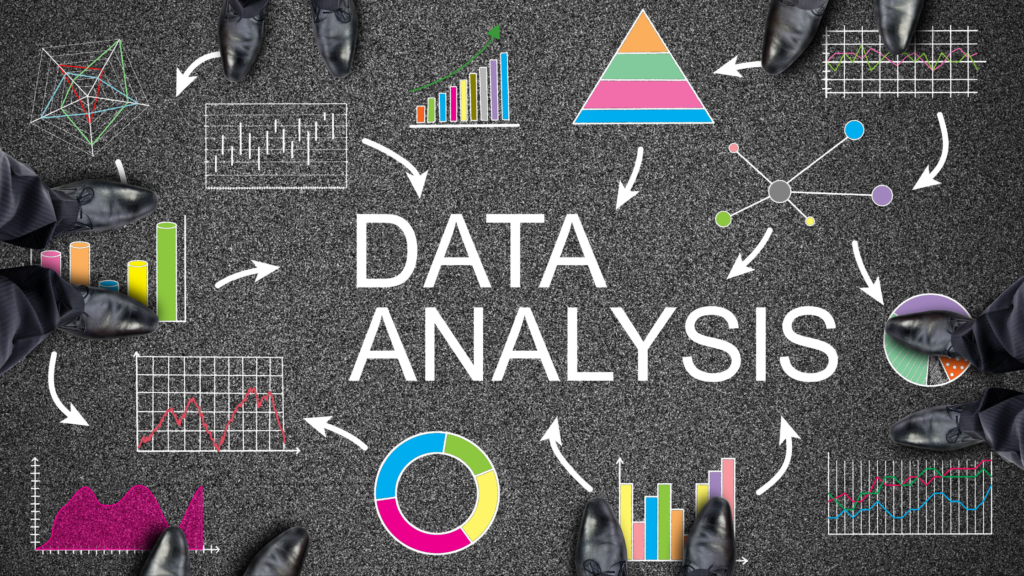Skyrocket Your Career
Welcome to this week’s edition of Data Science Demystified. Today, we delve into an essential topic for every data scientist and AI enthusiast: AI Development Platforms. Understanding and selecting the right platform can significantly impact your projects and career. Let’s explore the leading AI development platforms, their features, and popular GitHub repositories that offer valuable resources.
Table of Contents
AI Development Platforms
Artificial Intelligence (AI) is transforming industries and redefining the way we approach problem-solving. With the proliferation of AI applications, the choice of development platform has become crucial. Each platform offers unique features tailored to different needs, from beginners to advanced practitioners. In this newsletter, we will compare some of the most popular AI development platforms, examining their strengths and ideal use cases.
TensorFlow
TensorFlow is one of the most widely used open-source libraries for machine learning and AI. It is one of the most popular machine learning frameworks, for its flexible and comprehensive ecosystem. With TensorFlow, companies can develop applications for various domains such as healthcare diagnostics and financial forecasting. For example, TensorFlow is used to create models that analyze medical images to aid doctors in diagnosing diseases like cancer.
It offers a comprehensive ecosystem for building and deploying machine learning models at scale. TensorFlow ecosystem includes TensorFlow Lite for mobile and embedded devices, TensorFlow.js for JavaScript, and TensorFlow Extended (TFX) for production ML pipelines. The TensorFlow platform comes with a few key features that include:
- Ease of Use: TensorFlow offers Keras, a high-level API, making it easier for beginners.
- Scalability: Suitable for both small-scale and large-scale deployments.
Popular GitHub Repositories:
PyTorch
PyTorch, developed by Facebook’s AI Research lab, has gained popularity due to its dynamic computation graph and ease of use, particularly in research. It is an open-source machine learning framework known for its flexibility and ease of use.
It’s widely used for tasks like image classification, natural language processing, and reinforcement learning. For instance, researchers and developers use PyTorch to build and train neural networks for identifying objects in images and translating languages. The features mentioned below are some of the key features of PyTorch.
- Dynamic Computation Graph: Allows for more flexibility and ease during debugging.
- Pythonic Nature: It can easily integrate with the Python ecosystem.
- Community Support: Strong community and extensive documentation.
Popular GitHub Repositories:
- PyTorch Tutorials: Tutorials to get started with PyTorch.
- PyTorch Examples: A repository of diverse examples using PyTorch.
Microsoft Azure Machine Learning
Azure Machine Learning, part of Microsoft Azure, offers a robust platform for building, training, and deploying machine learning models. It is a cloud-based platform that provides tools for data scientists and developers to build, train, and deploy machine learning models.
It’s used in industries like retail and finance for tasks such as demand forecasting and fraud detection. Retailers use Azure Machine Learning to predict customer demand for products and optimize inventory management. Key features of Azure Machine Learning include:
- Automated Machine Learning: It simplifies the model building process.
- Integration: It seamlessly integrates with other 50+ Azure services.
- Scalability: It can easily scale with cloud resources.
GitHub Repository:
Azure Machine Learning Examples: Example notebooks and scripts for Azure Machine Learning.
Amazon SageMaker
This is a fully managed service by AWS that enables developers and data scientists to quickly build, train, and deploy machine learning models at scale.
Amazon SageMaker is a managed service that enables developers to build, train, and deploy machine learning models quickly and efficiently. It is used in fields like marketing and manufacturing for tasks like personalized recommendations and predictive maintenance. Manufacturers use Amazon SageMaker to analyze sensor data from equipment to predict when maintenance is required, reducing downtime. Amazon SageMaker key features:
- Integrated Jupyter Notebooks: This simplifies the development process.
- Managed Infrastructure: It automates infrastructure management.
- Model Monitoring: It offers tools for monitoring deployed models.
GitHub Repositories:
- AWS Machine Learning Blog: It has a collection of sample notebooks that showcase machine learning with SageMaker.
Google Cloud AI Platform
Google Cloud AI Platform provides a suite of tools and services for training, deploying, and managing machine learning models.
Google Cloud AI Platform offers a suite of tools and services for developing and deploying AI solutions on Google Cloud. It is employed in industries such as e-commerce and transportation for tasks like customer segmentation and route optimization. E-commerce companies use Google Cloud AI Platform to analyze user behavior and tailor product recommendations accordingly. Below mentioned features are a few key features of the Google Cloud AI Platform:
- End-to-End Solution: Supports the entire ML lifecycle.
- Integration with Google Services: Integrates well with BigQuery, Google Cloud Storage, etc.
- AutoML: Enables users to train high-quality models with minimal effort.
GitHub Repository:
- Google Cloud AI Demos: Sample projects and demos using Google Cloud AI Platform.
IBM WatsonX
IBM WatsonX is a powerful AI platform that helps businesses and developers create advanced AI models and applications. It offers a range of tools and services for building, training, and deploying AI solutions. For instance, WatsonX can be used in healthcare to analyze patient data and predict diseases early. This helps doctors give better treatment plans.
Additionally, in the finance sector, WatsonX can detect fraudulent transactions by analyzing patterns in large amounts of financial data. This ensures that banks can protect their customers from fraud. Overall, IBM WatsonX makes it easier to integrate AI into various industries, enhancing efficiency and decision-making.
Below mentioned features are a few important features of IBM WatsonX:
- Advanced AI Capabilities: IBM WatsonX offers cutting-edge tools for creating and deploying sophisticated AI models, making it easier to build intelligent applications.
- Data Integration: It provides robust data integration features, allowing users to combine data from various sources for comprehensive analysis.
- Machine Learning Tools: WatsonX includes powerful machine learning algorithms and tools for training models on large datasets, enhancing accuracy and performance.
GitHub Repository:
- IBM WatsonX: Examples and SDKs for building with Watson services.
H2O.ai
H2O.ai provides open-source software for data science and machine learning, emphasizing scalability and ease of use. H2O.ai offers open-source machine learning platforms and services for building and deploying AI applications. This platform supports industries like Financial Services, Government, Health, Insurance, Manufacturing, Marketing, Retail and Telecommunications.
It is utilized in domains like finance and insurance for tasks like risk assessment and fraud detection. Insurance companies use H2O.ai to analyze customer data and identify potentially fraudulent claims.
- AutoML: It automates the process of model selection and tuning.
- Integration: It supports languages like R, Python, and others.
- Enterprise Support: It offers solutions tailored to enterprise needs.
Popular GitHub Repositories:
H2O-3: The core H2O machine learning library.
Apache Spark MLlib
MLlib is Apache Spark’s scalable machine learning library, designed for high-performance machine learning on large datasets. MLlib is a distributed machine learning library built on Apache Spark for scalable and efficient data processing.
It is used in industries such as advertising and telecommunications for tasks like click-through rate prediction and network optimization. Advertisers leverage Apache Spark MLlib to analyze user interactions and improve the targeting of online ads.
- Scalability: It is optimized for large-scale data processing.
- Integration: It works seamlessly with other Spark components.
- Rich Library: It offers a variety of ML algorithms such as Classification, Regression, Decision Trees, Recommendations, Clustering, and many more
GitHub Repository:
- Apache Spark Examples: Example code for using Spark and MLlib.
DataRobot
DataRobot provides an automated machine learning platform that accelerates the process of building and deploying models. DataRobot is an automated machine learning platform that helps organizations build and deploy machine learning models without extensive programming knowledge.
DataRobot is used in sectors like banking and insurance for tasks such as credit scoring and underwriting. Banks use DataRobot to automate the process of assessing credit risk for loan applicants. Key features of DataRobot include:
- Automation: DataRobot automates many aspects of the data science workflow.
- User-Friendly Interface: It is designed for ease of use with a visual interface.
- Enterprise Features: Scalable solutions for business applications.
Popular GitHub Repositories:
DataRobot Community: Example projects and integrations.
Altair RapidMiner
RapidMiner is a data science platform that provides tools for data preparation, machine learning, deep learning, and predictive analytics. It is a data science platform that offers a visual workflow designer for building and deploying predictive analytics models.
It’s used in domains like retail and telecommunications for tasks like customer churn prediction and demand forecasting. Telecommunications companies use RapidMiner to analyze customer data and predict which customers are likely to switch to a competitor. The key features of RapidMiner are:
- Visual Workflow Designer: Simplifies the process of creating machine learning models.
- Integrated Environment: All-in-one platform for the complete data science lifecycle.
- Pre-built Templates: It uses ready-to-use templates for various use cases.
Popular GitHub Repositories:
- RapidMiner GitHub: Resources and examples for using RapidMiner.
Conclusion
Choosing the right AI development platform can enhance your productivity and the quality of your models. Each platform has its unique strengths, and the best choice depends on your specific needs, whether it’s ease of use, scalability, or integration with other tools.
By leveraging these platforms and exploring their rich ecosystems, you can speed up your journey in AI and data science. For further resources, explore the suggested GitHub repositories where you can find valuable code snippets, projects, and comprehensive examples.
We hope you find this comparison helpful in selecting the best AI development platform for your projects. As always, you may feel free to reach out with any questions or suggestions. Thank you for being a valued subscriber to



